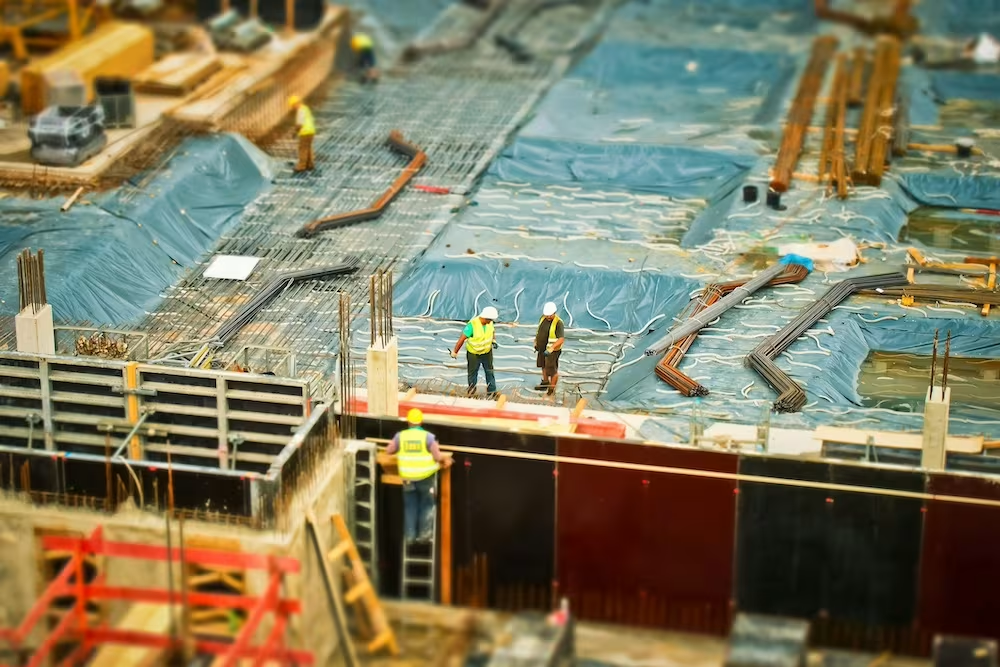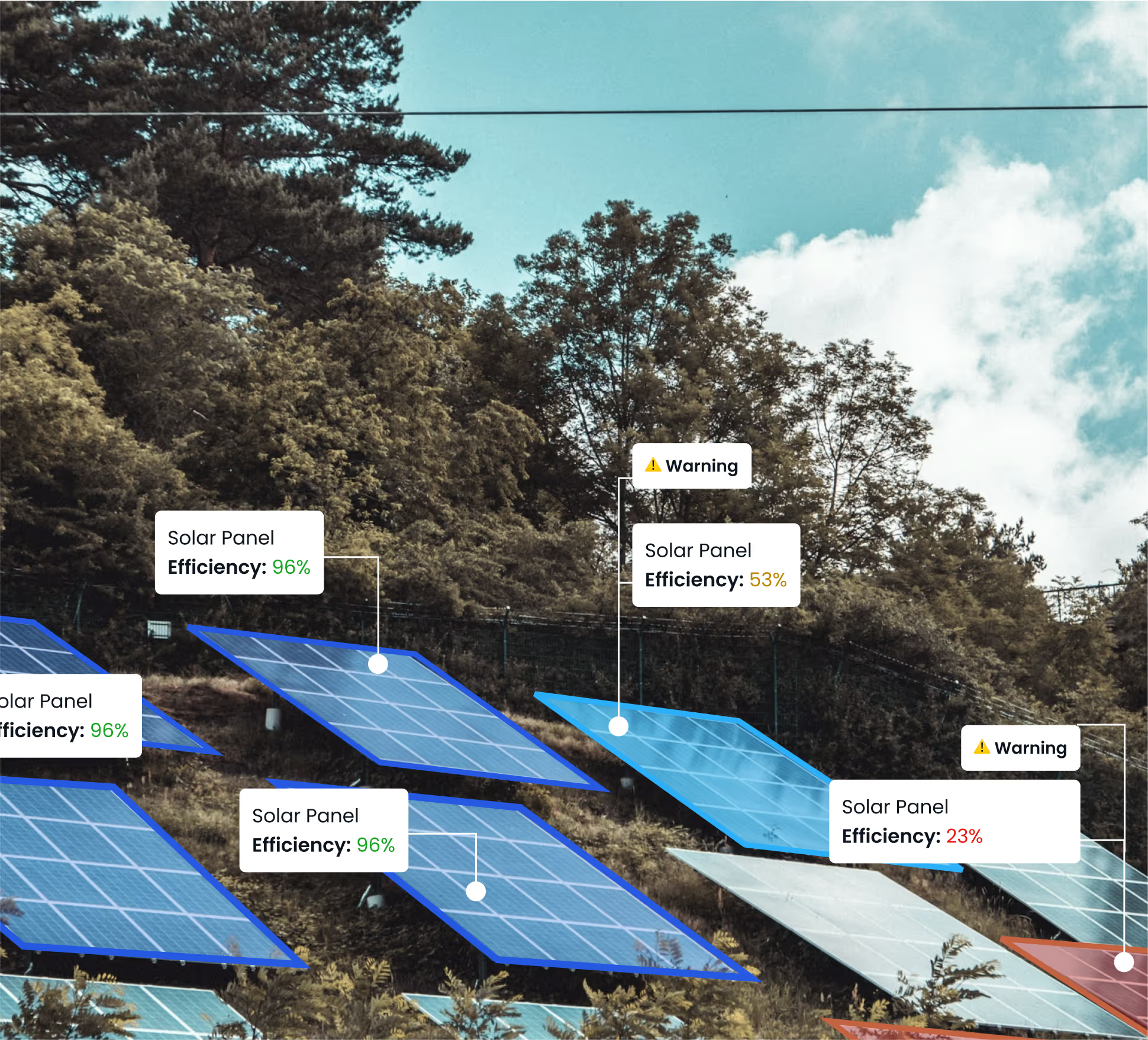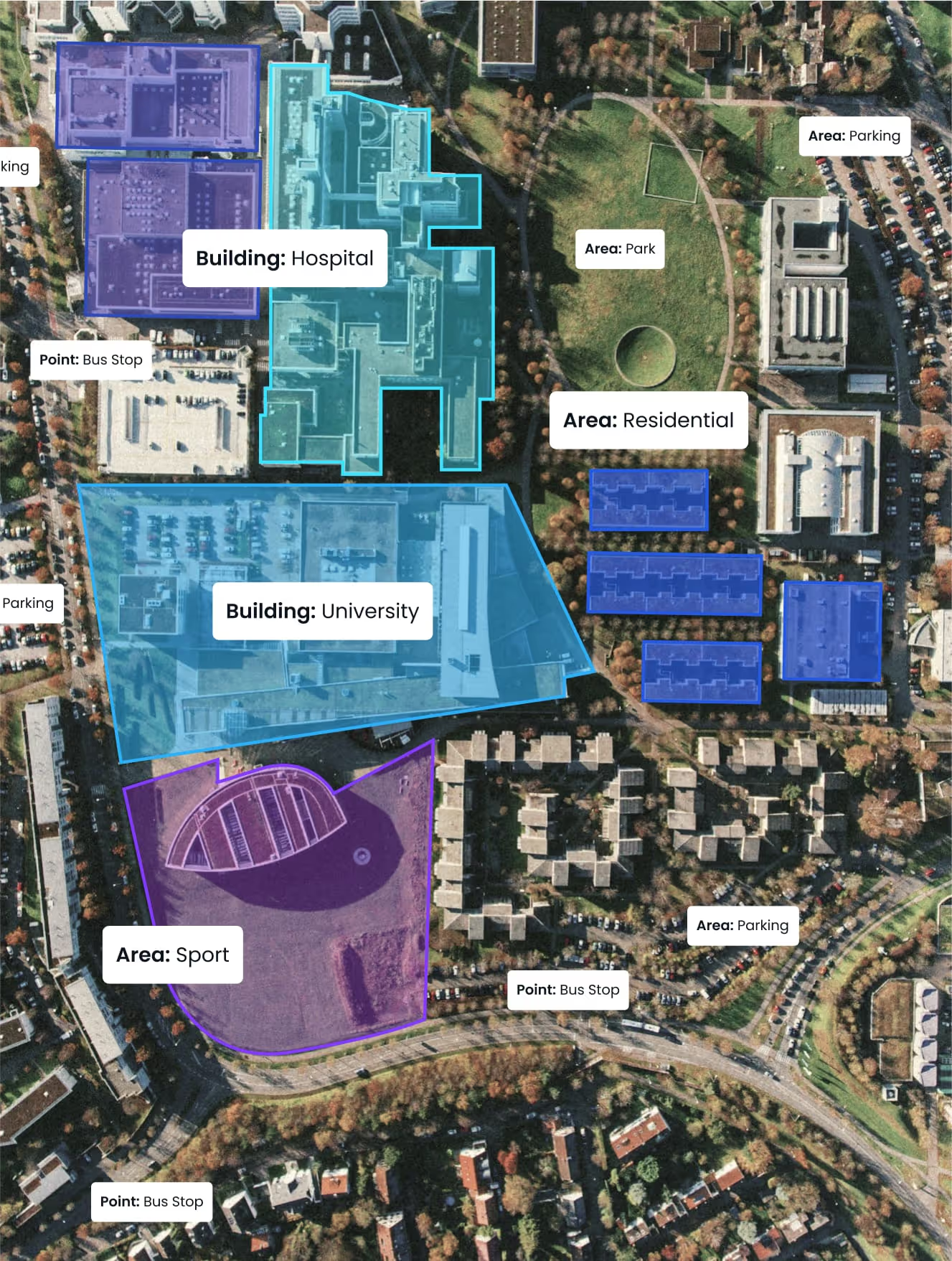The Role of AI in Construction Site Safety 🏗️
Construction sites are among the most hazardous workplaces, with heavy machinery, elevated structures, and human error all posing serious risks. PPE—including helmets, safety vests, gloves, and boots—is the frontline defense against injuries. Yet enforcing compliance is a logistical challenge, especially on large-scale or high-turnover projects.
Enter AI-powered video monitoring.
Computer vision models can now automatically detect whether workers are wearing required PPE in real-time. These systems, often installed on CCTV or smart cameras, scan site footage to flag violations and trigger alerts—improving safety without adding supervisory overhead.
But achieving this level of automation depends heavily on well-annotated datasets.
Why PPE Annotation Matters for AI Accuracy
For AI to understand what a helmet or a reflective vest looks like in the wild, it must first be trained on thousands of labeled examples. Annotation is the process of labeling raw images or videos to indicate where and how PPE appears.
Key annotation goals include:
- Identifying specific PPE types on workers (e.g., helmets, vests, gloves)
- Distinguishing between compliant and non-compliant cases
- Labeling complex scenarios (e.g., partially obscured gear, motion blur)
Annotations serve as the ground truth that supervised learning models use to understand patterns. If the dataset is biased or poorly labeled, the AI will either fail to generalize or produce false positives—both dangerous outcomes on a construction site.
Key PPE Categories to Monitor in Annotation
The focus of PPE annotation should align with regional safety standards like OSHA, ISO 45001, or the European Directive 89/686/EEC. For AI systems to provide meaningful alerts, annotation teams should target:
Helmets (Hard Hats)
Color, shape, and placement can vary. Annotate even partial visibility, unusual angles, or worker-specific markings.
Safety Vests
These often come in fluorescent colors like yellow or orange. High-visibility material must be differentiated from similarly colored objects like signage or machinery.
Gloves
Trickier to annotate due to hand motion, shadows, and task variation. Gloves should be consistently labeled with contextual awareness.
Protective Footwear
Work boots often resemble regular shoes. Bounding box placement should ensure toe and ankle coverage is included.
Goggles or Face Shields
More common in welding or dust-heavy environments. These are often transparent, requiring high contrast or IR-enhanced footage for proper annotation.
Ear Protection and Respirators
Generally used in specialized contexts like demolition or chemical handling. Annotators must understand site-specific PPE norms to avoid mislabeling.
Strategic Data Collection for Diverse Scenarios
You can’t build a robust PPE detection model without diverse, context-rich data. Here’s what to aim for in your dataset:
- Multiple angles and lighting conditions: Overhead drones, mounted poles, helmet cams, and fixed CCTV can all offer different perspectives.
- Varied environments: Tunnels, rooftops, interiors, and outdoor zones each present distinct visual challenges.
- Diverse workforce samples: Varying body sizes, postures, and movement types ensure the model generalizes better.
- Day vs. night: Safety gear must be recognizable in both well-lit and dimly lit scenes—especially for 24/7 projects.
To augment real-world footage, synthetic data generation tools can help simulate edge cases (e.g., low visibility, extreme weather) without additional on-site recording.
Annotation Challenges in Construction Safety Footage
Annotating PPE in real-world footage comes with its own set of challenges:
Occlusion and Overlap
Workers often obscure each other, or PPE may be hidden behind tools or building materials. Annotations must be done frame by frame to catch brief visibility moments.
Motion Blur
Workers in motion—especially when operating machinery or running—may cause blur. Annotators should decide whether to skip, interpolate, or flag such frames for review.
Non-compliance Ambiguity
What happens when a helmet is worn incorrectly, or a vest is half-zipped? Annotation teams should define clear criteria for compliance vs. non-compliance and apply them consistently.
Environmental Interference
Dust, rain, fog, and lens glare may compromise visibility. Annotators should flag such scenes and optionally assign a “visibility score” for future model tuning.
How to Structure Annotation Guidelines for PPE
Well-structured guidelines help annotation teams remain consistent and scalable across large projects. These guidelines should:
- Define each PPE category visually and contextually
- Specify bounding box or polygon placement rules
- Clarify labeling behavior in edge cases (e.g., partial PPE)
- Include examples and counterexamples with reasoning
- Offer direction on label hierarchy or class nesting if needed (e.g., ‘helmet_compliant’ vs. ‘helmet_non_compliant’)
A shared document, ideally paired with an internal review protocol and sample audits, can dramatically improve quality and reduce rework.
Balancing Human-in-the-Loop and Automation
While some platforms offer semi-automated tools (e.g., object tracking or interpolation), human oversight remains essential—especially when handling compliance-sensitive labels. In practice, most annotation workflows blend:
- Manual labeling for high-accuracy objects
- Model-assisted pre-labeling for faster throughput
- QA audits to validate consistency
AI can assist with batch labeling or highlight anomalies, but humans must validate nuanced decisions—particularly in PPE compliance where safety is on the line.
Compliance, Privacy, and Ethics Considerations 🔐
Surveillance on construction sites must respect ethical and legal boundaries. As you build datasets:
- Blur or anonymize worker faces unless explicit consent is granted
- Comply with GDPR or equivalent privacy regulations for data collection and processing
- Ensure datasets are not biased toward certain age groups, genders, or site types
- Establish secure storage for annotated video, especially if it includes time-stamped behavior
Clear communication with workers about AI monitoring builds trust and reduces resistance to technology adoption.
Optimizing for Real-Time Model Use on Site
Once your annotated PPE dataset has been used to train an AI model, the next hurdle is real-world deployment. Construction environments are dynamic, unpredictable, and often hostile to sensitive tech. Therefore, ensuring your model performs in real-time, on-site, and under resource constraints is crucial for operational success.
Here’s how to prepare for seamless deployment in active construction zones:
Choose the Right Model Architecture for Edge Devices
High-performance AI doesn't always mean bigger is better. Real-time PPE compliance checks require lightweight models that balance speed with accuracy. Popular choices include:
- YOLOv5/YOLOv8: Known for excellent speed-accuracy trade-offs, especially when optimized using TensorRT or ONNX.
- MobileNet and EfficientDet: Designed for mobile and embedded devices; ideal for limited-resource environments.
- EdgeTPU-optimized models: For hardware like Coral Dev Board or USB Accelerator.
The model must be compressed and quantized (e.g., INT8 precision) to run efficiently on low-power edge devices like the NVIDIA Jetson Orin Nano.
Build a Continuous Feedback Loop
Deployment doesn’t mean the training process is over—it’s just the beginning of a continuous improvement cycle. Real-world footage will always expose new edge cases or unseen compliance scenarios. To maintain model performance:
- Collect feedback from false positives/negatives
- Retrain on new violations or unique PPE styles
- Adapt to seasonal or regional attire variations (e.g., cold-weather gear or culturally specific PPE)
Creating an annotation pipeline that incorporates post-deployment footage ensures your AI remains effective over time.
Integrate with Existing Site Infrastructure
AI-powered PPE monitoring becomes truly impactful when it integrates seamlessly into existing workflows. Whether your site uses cloud dashboards, mobile apps, or physical alert systems, your model should be plug-and-play ready.
Some integration strategies include:
- Real-time alerting systems that notify safety supervisors via app or SMS
- Live dashboards showing compliance scores across zones or worker groups
- Historical heatmaps of high-risk areas for safety planning
An effective deployment prioritizes usability, not just detection accuracy.
Test Under Real-World Constraints
Before full rollout, it's essential to pilot your AI model in actual site conditions. Bench tests in lab environments rarely account for the harsh realities of construction zones. Validate your model against:
- Dust, debris, and poor visibility
- Non-standard camera angles and fluctuating lighting
- Bandwidth limitations or offline scenarios
- Worker behavior variability and PPE misuse
Running a 1–2 week field pilot with controlled data logging can help identify blind spots early.
Prioritize Low-Latency and High-Uptime
PPE violations need to be caught in the moment—not 5 minutes later. Low-latency inference (under 100ms per frame) is critical for real-time alerts. Optimize performance by:
- Reducing frame resolution or sampling rate intelligently
- Running inference on-device instead of in the cloud
- Using asynchronous processing queues for video ingestion
Smart cameras or embedded systems should also be designed for long operational uptime, with mechanisms for power backup, remote updates, and failure detection.
Real-World Use Cases of PPE AI Monitoring
AI-based PPE monitoring is rapidly moving from R&D to real-world implementation, particularly among forward-thinking construction firms and safety tech providers. Here’s how AI-powered annotation and compliance checking is already delivering value in the field:
High-Rise Urban Construction in Asia
In cities like Singapore, Tokyo, and Seoul, where vertical construction is the norm and labor safety is strictly regulated, AI systems are deployed on tower cranes and high-rise scaffolding to monitor helmet and harness usage. Cameras integrated into the crane’s base feed video to edge devices running real-time inference models.
Impact:
- Reduced fall incidents by 35%
- Automated compliance reports submitted to government safety portals
- Instant alerts sent to floor supervisors when a worker is spotted without fall protection gear
Oil & Gas Refinery Mega Projects in the Middle East
Sites in Saudi Arabia and the UAE are using AI vision tools to detect PPE compliance, including flame-resistant suits and respirators. Given the extreme heat and complex PPE types, models are trained on infrared and thermal imagery in addition to visible spectrum data.
Impact:
- Enhanced detection under harsh lighting and heat distortions
- Cross-verified footage with badge-scanning systems to confirm worker identity
- AI-powered alerts integrated into safety control rooms to prevent shutdowns
Remote Infrastructure Projects in Africa and Latin America
In remote or temporary construction environments with limited connectivity, AI models are deployed on compact edge devices like the NVIDIA Jetson. These setups run autonomously with periodic syncing via mobile hotspots or satellite links.
Impact:
- Maintained 24/7 PPE monitoring even in bandwidth-limited zones
- Drones equipped with AI cameras provide periodic aerial compliance audits
- Reduced reliance on manual safety audits and reporting
Smart Cities and Public Works in Europe
In cities adopting “smart infrastructure” practices, AI is used during roadwork and rail projects to monitor PPE compliance and worker safety around automated equipment. Real-time compliance data is also used to validate contractor performance on municipal dashboards.
Impact:
- PPE violation rate reduction by over 40%
- Automated billing systems linked to compliance thresholds
- Public transparency on worker safety statistics via open data portals
Modular Construction Sites in North America
In the U.S. and Canada, companies using prefabricated construction methods have integrated AI into modular assembly lines. Cameras monitor workers to ensure consistent glove, boot, and vest usage during assembly, where industrial robotics also operate.
Impact:
- Reduced machinery-related accidents during prefab operations
- Cross-validation with shift schedules for workforce analytics
- Improved insurance audit scores with real-time safety logs
Closing Thoughts: Build Safer Sites with Smarter Data
Annotating PPE compliance may sound like a technical backend task—but it's foundational to building a safer, smarter, and more accountable construction site. The accuracy and ethics of your annotations will directly shape how well your AI model performs in critical, high-stakes situations.
By focusing on quality data, robust guidelines, and continuous feedback loops, you’re not just building a dataset—you’re shaping the future of construction safety.
Let’s make safety visible, one frame at a time.
If you're developing your own AI safety system or need expert guidance on annotation workflows, get in touch with a trusted partner who understands both the tech and the job site. You don’t have to do it alone—collaborate smarter.





